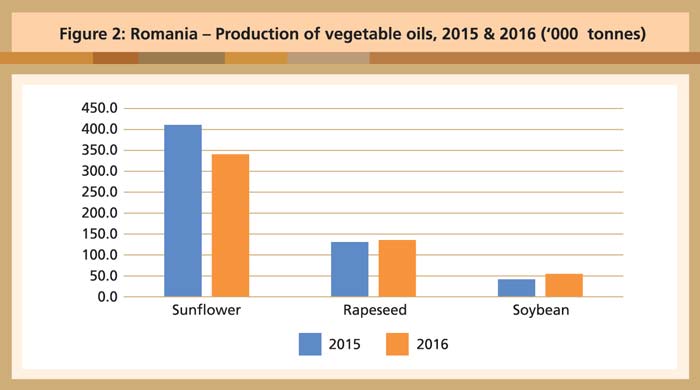



In 1862, the principalities of Moldavia and Wallachia formally united under the name ‘Romania’. The country gained Independence in 1878. In 1947, however, a Communist ‘people’s republic’ was formed during Soviet occupation after the Second World War.
In 1965, the dictator Nicolae Ceausescu took power. After he was overthrown in 1989, former Communists dominated the government until 1996, when they were swept from power. Romania joined NATO in 2004 and the EU in 2007.
By the end of the Ceausescu dictatorship, the Romanian economy was in extremely poor shape. But, thanks to the support of international donors such as the International Monetary Fund, the World Bank and the EU, Romania has succeeded in revitalising its economy. It achieved 3.7% growth in 2015 and 4.8% in 2016. Still, with 55% of the average EU per capita income (2014), it is the EU’s second-poorest country after Bulgaria (Figure 1).

Source: World Bank
Vegetable oils market
Sunflower oil is by far the dominant commodity in the Romanian market (Figure 2). It is a staple in every kitchen. Palm oil is a major import, surpassing sunflower oil in 2013 (Figure 3).

Source: Oil World Annual 2017

Source: Oil World Annual 2017
Pages : 1 2